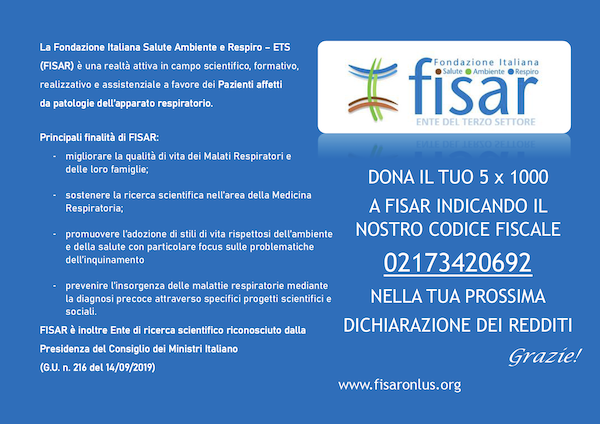COPD: maximization of bronchodilation
Keywords:
Bronchodilation, COPD, Dyspnea, Exercise tolerance, Fixed combination indacaterol/glycopyrronium, HRQoL, Hyperinflation, LABA, LAMAAbstract
The most recent guidelines define COPD in a multidimensional way, nevertheless the diagnosis is still linked to the limitation of airflow, usually measured by the reduction in the FEV1/FVC ratio below 70%. However, the severity of obstruction is not directly correlated to symptoms or to invalidity determined by COPD. Thus, besides respiratory function, COPD should be evaluated based on symptoms, frequency and severity of exacerbations, patient’s functional status and health related quality of life (HRQoL). Therapy is mainly aimed at increasing exercise tolerance and reducing dyspnea, with improvement of daily activities and HRQoL. This can be accomplished by a drug-induced reduction of pulmonary hyperinflation and exacerbations frequency and severity. All guidelines recommend bronchodilators as baseline therapy for all stages of COPD, and long-acting inhaled bronchodilators, both beta-2 agonist (LABA) and antimuscarinic (LAMA) drugs, are the most effective in regular treatment in the clinically stable phase. The effectiveness of bronchodilators should be evaluated in terms of functional (relief of bronchial obstruction and pulmonary hyperinflation), symptomatic (exercise tolerance and HRQoL), and clinical improvement (reduction in number or severity of exacerbations), while the absence of a spirometric response is not a reason for interrupting treatment, if there is subjective improvement in symptoms. Because LABA and LAMA act via different mechanisms of action, when administered in combination they can exert additional effects, thus optimizing (i.e. maximizing) sustained bronchodilation in COPD patients with severe airflow limitation, who cannot benefit (or can get only partial benefit) by therapy with a single bronchodilator. Recently, a fixed combination of ultra LABA/LAMA (indacaterol/glycopyrronium) has shown that it is possible to get a stable and persistent bronchodilation, which can help in avoiding undesirable fluctuations of bronchial calibre.
Published
Issue
Section
License
Mattioli 1885 has chosen to apply the Creative Commons Attribution NonCommercial 4.0 International License (CC BY-NC 4.0) to all manuscripts to be published.






